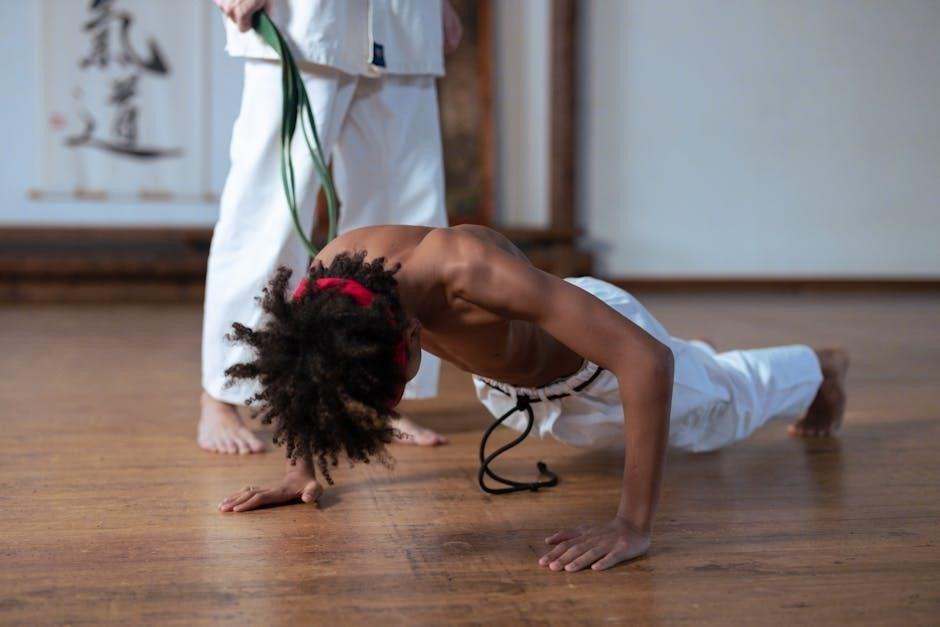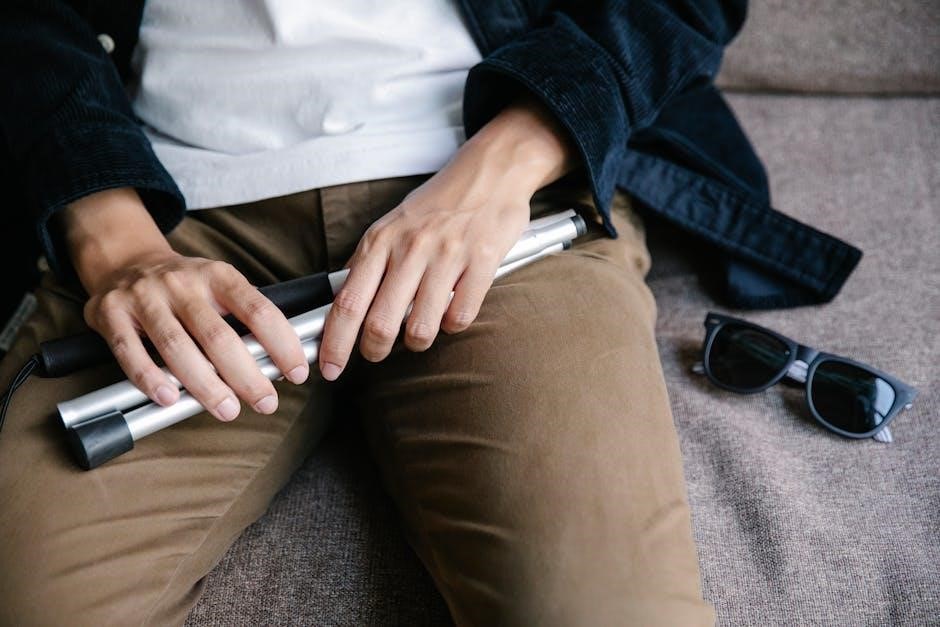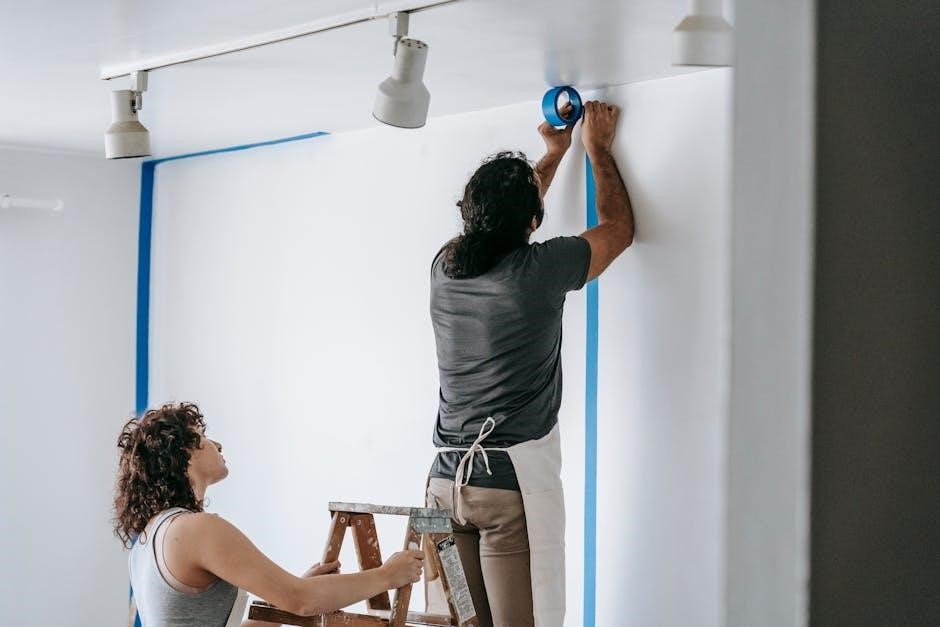Self-bondage is a practice that involves restraining oneself for exploration, discipline, or pleasure. It requires education, safety, and the right mindset to ensure a positive experience.
Understanding the Basics
Self-bondage involves restraining oneself using ropes, handcuffs, or other tools, often for personal exploration or pleasure. It requires a clear mindset, as the practitioner must act as both the dominant and submissive. Safety is paramount, as improper techniques can lead to injury or difficulty escaping. Beginners should start with simple restraints and gradually explore more complex methods. Understanding basic knots and how to release them quickly is essential. The practice also involves psychological preparation, as it can evoke strong emotions or sensations. Proper tools, such as high-quality ropes or locks, are crucial to ensure control and safety. Education and planning are key to a positive and enriching experience.
Importance of Safety
Safety is crucial in self-bondage to prevent physical harm and ensure a controlled experience. Proper techniques and tools are vital to avoid injuries or unintended consequences. Always use high-quality materials that allow for quick release if needed. Numbness or restricted blood flow can lead to serious issues, so monitoring your body is essential. Creating an emergency plan, such as having a backup key or a way to signal for help, is a must. Never compromise on safety measures, as they ensure both physical and mental well-being. Education and preparation are key to minimizing risks and enjoying the practice responsibly. Stay aware of your limitations and never push beyond what is safe or comfortable.
Preparation is essential for a safe and enjoyable self-bondage experience. Gather quality tools, create a secure environment, and mentally prepare to ensure readiness and confidence. Selecting appropriate tools is crucial for self-bondage. Opt for durable, comfortable materials like cotton ropes or silicone cuffs to ensure safety and ease of use. Avoid using items that can cause unintended harm, such as metal handcuffs or thin cords, which may restrict circulation. Quality restraints designed for bondage are recommended, as they are created with safety features like quick-release mechanisms; Additionally, consider using tools that allow for easy escape, such as carabiners or panic snaps, to maintain control during the experience. Always inspect gear for damage before use to prevent accidents. The right tools enhance both safety and enjoyment, making them a worthwhile investment. Creating a safe environment is essential for self-bondage. Begin by choosing a quiet, private space where you can relax without interruptions. Ensure the area is clear of hazards like sharp objects or fragile items that could cause injury if moved. Position yourself near a stable object to prevent tipping or falling. Keep emergency tools, such as scissors or a first-aid kit, within easy reach. Use non-slip surfaces or padding to enhance comfort and stability. Additionally, inform a trusted friend or partner about your activity and establish a check-in time for added security. A well-prepared space minimizes risks and allows you to focus on the experience with confidence and peace of mind. This setup ensures both physical and mental well-being during self-bondage practice. Mental and physical preparation is crucial for a safe and enjoyable self-bondage experience. Start by assessing your physical condition to ensure no existing injuries or health issues could worsen during restraint. Mentally, cultivate a calm and focused mindset through relaxation techniques like deep breathing or meditation. Hydrate and avoid heavy meals beforehand to prevent discomfort. Dress in loose, comfortable clothing and avoid tight accessories that might restrict circulation. Familiarize yourself with your equipment and practice using it beforehand to build confidence. Setting clear intentions and boundaries helps maintain emotional stability. A well-prepared body and mind enhance the experience, ensuring you can respond appropriately to any challenges that arise during self-bondage. This preparation fosters a positive and controlled environment for exploration. Self-bondage techniques range from simple knots to complex immobilizations, offering diverse experiences for practitioners. These methods require skill, patience, and practice to master safely and effectively. Mastering basic knots and restraints is essential for self-bondage. Start with simple loops and ties, ensuring they are loose enough to avoid circulation issues. Use ropes or straps designed for bondage, as they are soft and less likely to cause discomfort. Practice tying knots on inanimate objects before applying them to yourself. Always keep safety scissors or a release tool nearby. Begin with wrist or ankle restraints, gradually exploring more complex configurations as confidence grows. Remember, the key to safe self-bondage is gradual progression and never pushing past personal comfort limits. Proper technique ensures both enjoyment and security. Intermediate self-bondage techniques focus on immobilization while maintaining safety. Use straps or ropes to bind limbs together, ensuring circulation remains unimpeded. Incorporate spreader bars or positions that limit movement without causing strain. Chest harnesses and body wraps can enhance the experience, providing a sense of containment. Practice methods like frogging or hobbling to restrict leg movement. Always test restraints incrementally and have a quick-release mechanism in place. These techniques build upon basic skills, offering deeper exploration of control and restraint. Stay mindful of body positioning to avoid nerve pressure or discomfort. With practice, intermediate methods can elevate the self-bondage experience while keeping safety a priority. Advanced self-bondage involves intricate techniques for prolonged immobilization, requiring precision and experience. Use time-release knots or locks to extend sessions, ensuring escape routes remain accessible. Incorporate suspension methods, such as overhead pulleys, for enhanced challenge and sensation. Explore multi-point harnesses that distribute pressure evenly, minimizing discomfort. Combine mental and physical elements, like sensory deprivation or timed challenges, to deepen the experience. Always pre-test equipment and have a failsafe release plan. These methods push boundaries, offering intense experiences for those skilled in self-restraint. Safety and preparation are paramount to avoid complications. Advanced techniques reward dedication with profound exploration of control and endurance. Prioritize safety by using durable materials, avoiding constricting knots, and having emergency tools nearby. Regularly monitor circulation and nerve function to prevent harm. Self-bondage carries inherent risks, including nerve damage, circulation issues, and accidental injury. Improperly tied knots can lead to numbness or tingling, while prolonged restraint may cause swelling. Additionally, using unsuitable materials or ignoring safety protocols increases the likelihood of harm. It’s crucial to recognize these hazards and take proactive steps to mitigate them. Always use high-quality, durable tools and ensure quick-release mechanisms are in place. Understanding these risks allows practitioners to approach self-bondage with caution and confidence, ensuring a safer and more enjoyable experience. Awareness is key to minimizing potential dangers and maximizing the benefits of this practice. An emergency release plan is essential for safe self-bondage practices. This plan should include quick-release mechanisms, such as easily accessible keys or tools, to ensure rapid liberation if needed. Practitioners should always have a backup method, like a second key or a trusted emergency contact, to avoid entrapment. It’s also wise to keep a pair of safety scissors or bolt cutters nearby to resolve any unexpected issues. Time limits for sessions can help prevent prolonged restraint, reducing the risk of complications. By having a well-thought-out emergency plan, individuals can confidently explore self-bondage while maintaining control and safety. Preparation is the cornerstone of a secure and enjoyable experience. Monitoring your physical and mental state is crucial during self-bondage. Pay attention to sensations like numbness, tingling, or pain, as these can indicate nerve damage or poor circulation. Regularly check for signs of distress, such as dizziness or shortness of breath, which may require immediate release. Mentally, stay aware of your emotional state; feelings of panic or unease should prompt a swift exit from the scene. Using a timer can help limit exposure to prolonged restraint, preventing long-term discomfort. After release, gently move limbs to restore blood flow and assess any lingering effects. This mindful approach ensures a safe and balanced experience, prioritizing well-being over exploration. Aftercare is essential post-self-bondage, ensuring physical and emotional well-being. Gentle movement, hydration, and comfort help the body recover, while reflection and self-compassion nurture mental health. Proper hygiene after self-bondage is crucial for health and safety. Clean all tools and clothing thoroughly to prevent infections. After releasing restraints, gently wash the skin with mild soap and warm water to remove any sweat or residue. Pat dry thoroughly to avoid irritation. Inspect for any signs of injury, such as bruises or cuts, and apply appropriate treatments. Keep all bondage tools organized, braided, or stored properly to maintain their condition and readiness for future use. Regularly sanitize equipment to ensure cleanliness and prevent bacterial growth. This routine helps maintain both physical and mental well-being post-session. After prolonged restraint, it’s essential to allow your body time to recover. Move slowly and gradually to avoid discomfort or injury. Stretch limbs gently to restore circulation and flexibility. If numbness or tingling occurs, massage the affected areas to promote blood flow. Rest and hydration are key to replenishing energy levels. Avoid tight clothing or further restraints for at least 24 hours. Monitor any areas that were bound for signs of bruising or swelling and apply ice if necessary. Emotional recovery is also important; take time to reflect on the experience and ensure mental well-being. Proper care after prolonged restraint ensures both physical and psychological health remain intact. Emotional and psychological aftercare is crucial for a healthy self-bondage experience. Acknowledge and process your feelings post-session to ensure mental well-being. Engage in calming activities like meditation or journaling to reflect on the experience. Open communication with a trusted partner or community can provide support and understanding. Prioritize self-compassion and avoid self-judgment. Recommit to personal boundaries and reassess future practices if needed. A safe and nurturing environment fosters emotional balance, ensuring that the experience remains positive and enriching. Proper mental care is vital for long-term emotional health and continued exploration with confidence.
Preparation for Self Bondage
Choosing the Right Tools and Gear
Setting Up a Safe Environment
Mental and Physical Preparation


Techniques and Methods
Basic Knots and Restraints

Intermediate Techniques for Immobilization
Advanced Self-Bondage Methods

Safety Measures and Precautions
Understanding Risks and Hazards
Creating an Emergency Release Plan

Monitoring Physical and Mental State


Aftercare and Recovery
Post-Bondage Care and Hygiene
Recovering from Prolonged Restraint
Emotional and Psychological Aftercare
